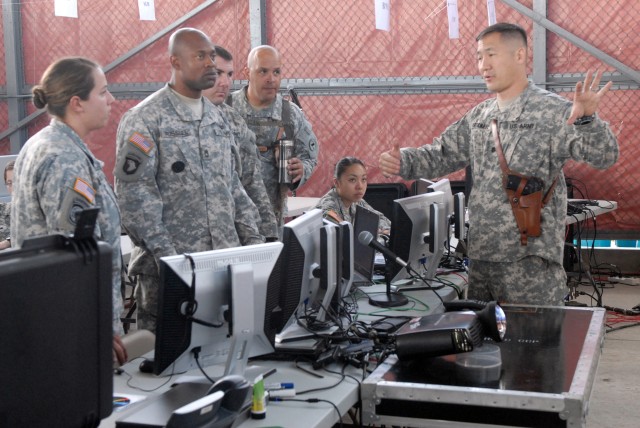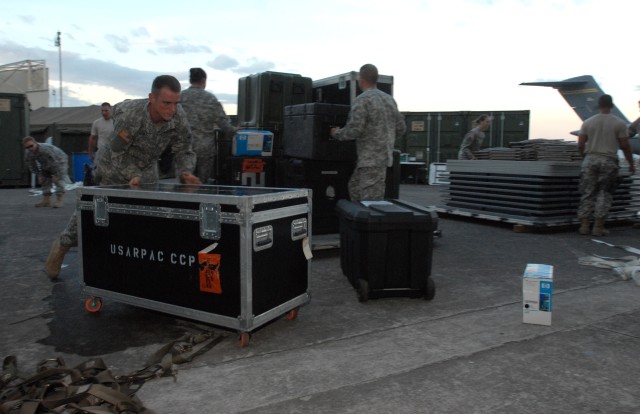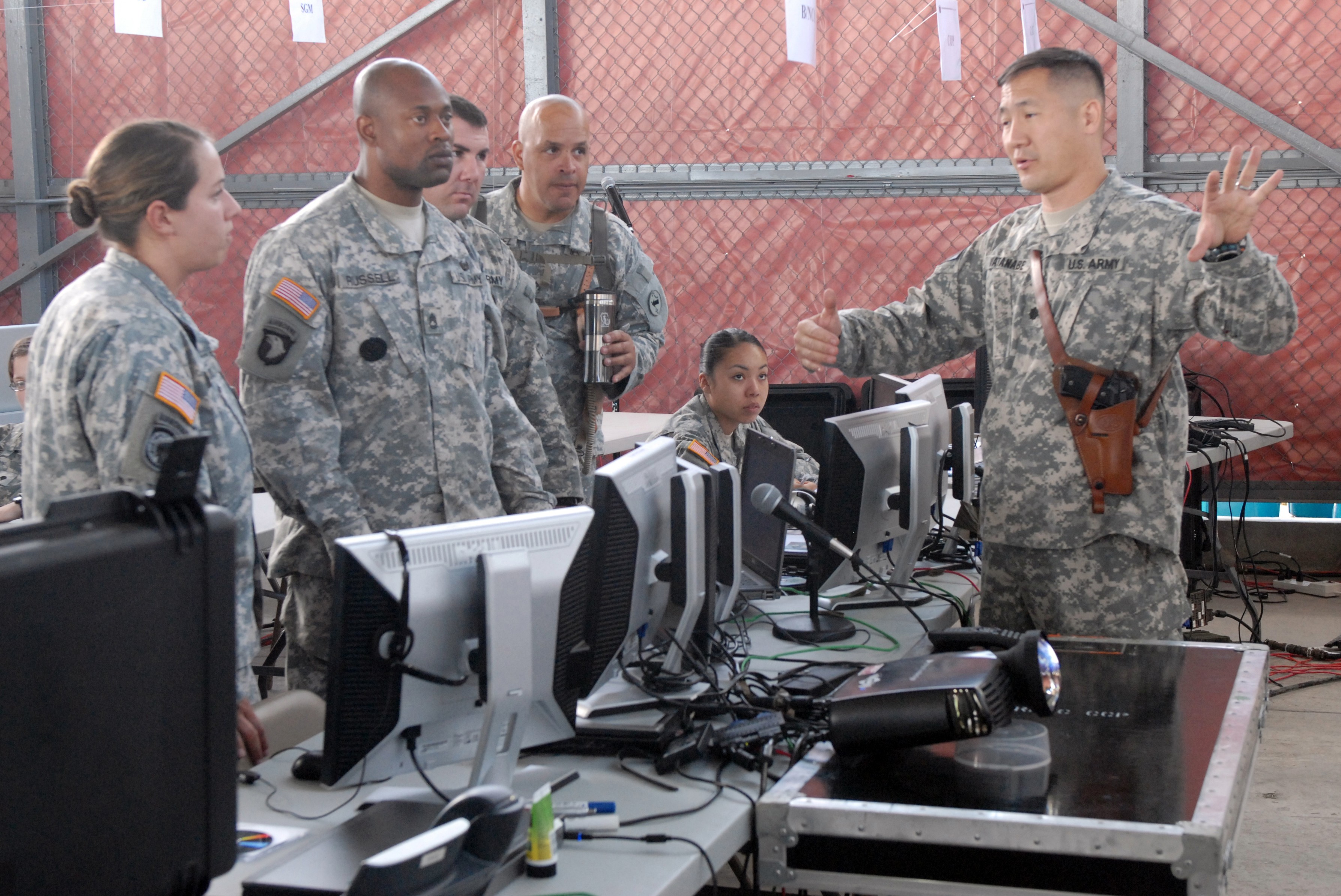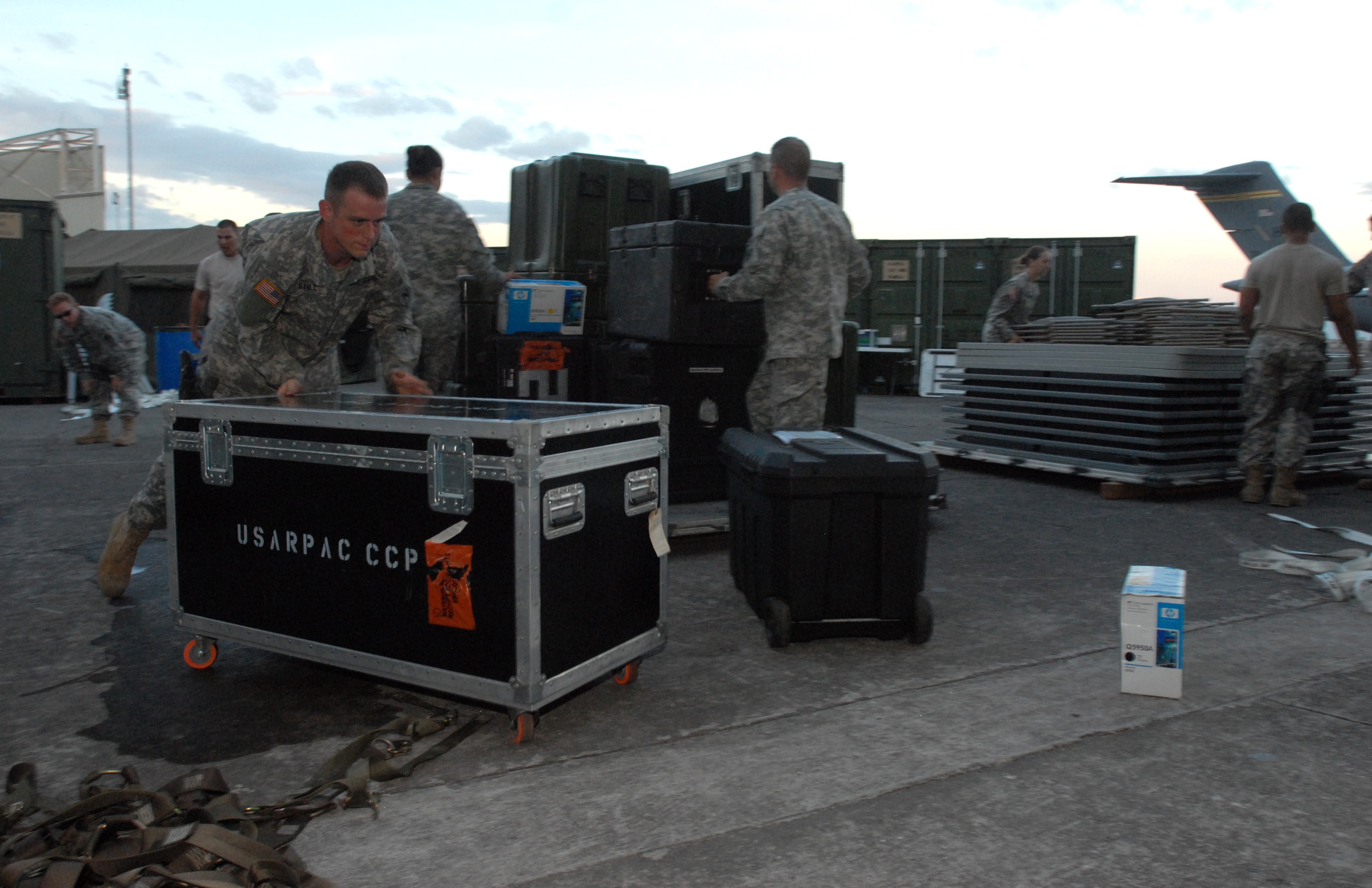CLARK FIELD, Philippines -- The tip of the spear for U.S. Army Pacific command and control participated in their certification exercise in the Philippines March 24 through April 1.
"The CERTEX is a culmination of all individual and collective training that empirically demonstrates the capability of the CCP in an environment that we will operate in," said Col. Chels Chae, USARPAC deputy chief of staff and CCP chief. "It's a final gate through which the USARPAC commander intends to inform the Pacific Command commander that USARPAC has a standing capability to respond to humanitarian assistance, disaster relief and other regional crisis on short notice," Chae added.
The Contingency Command Post consists of more than 90 personnel with the specific skills to provide a USARPAC forward command post capability, specifically focusing on small scale contingencies such as supporting humanitarian assistance, disaster relief and peace operations. The CCP can tailor personnel and equipment to fit the mission with a team as small as nine, to as many as more than 120 persons in augmenting forces.
"Somewhere in that spectrum the CG (commanding general) can send forward this element and it can be used to command and control other elements to support the movement of supplies and materiel for humanitarian assistance missions or if we actually had forces on the ground we could control up to two brigades for a peace enforcement mission," said Capt. Jeremy Pflug, CCP intelligence officer.
Still a unique concept within the U.S. Army, the CCP trained to become fully operational capable since mid 2009, conducting exercises and testing various configurations to rapidly establish a self-sustaining command center.
To initiate the certification, the CCP arrived with all needed supplies and equipment at Clark Air Base over several days by U.S. Air Force C-17 cargo planes, provided by the 535th Airlift Support Squadron, Joint Base Pearl Harbor-Hickam, Hawaii, and other commercial flights.
The CCP Soldiers clad in full body armor, helmets, and side arms arrived to the certification site, tackled the austere conditions expected in a contingency operation. They were welcomed by voracious mosquitoes, the random stray lizard and cat, and stifling heat and humidity,
"These aren't horrible living conditions, but they are austere. Sleeping on cots, not having shower facilities ... makes things 'difficult', but this is the way it would be," said Capt. Britney Woods, battle captain at the CCP's Combined Operations Integration Center.
Staff Sgt. Luis Hernandez a CCP operations sergeant offered his candid opinion, "Living conditions here are terrible, and I had it better in Iraq."
The team demonstrated their proficiency, establishing connections to military networks with satellite terminals within 30 minutes. The entire CCP was operational providing complete battle update briefings to USARPAC headquarters in Hawaii within 24 hours.
"The real challenge is trying to put into place systems that are closed circuit and repeatable for rapid deployment," said Col. James Hess, "As the CCP matures and develops its procedures and readiness SOP (standard operating procedures) we'll get there. We executed the mission successfully, and that's what matters most for this exercise. We can alert, marshal and deploy to a remote site and establish operations. We're trained to the point where we know what to do to get better and now we have to do it."
"USARPAC, now has a dedicated, theater committed command and control capability that can respond to all manners of crisis -- from humanitarian assistance, disaster relief and peace operations," said Chae.




Social Sharing